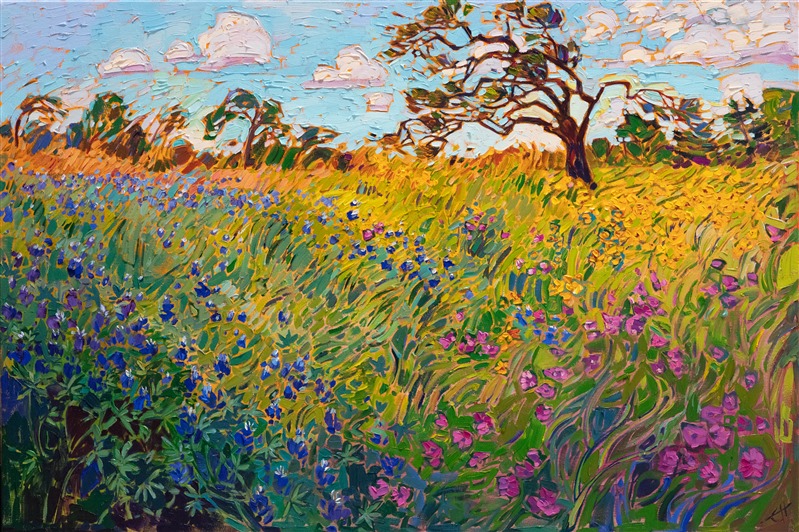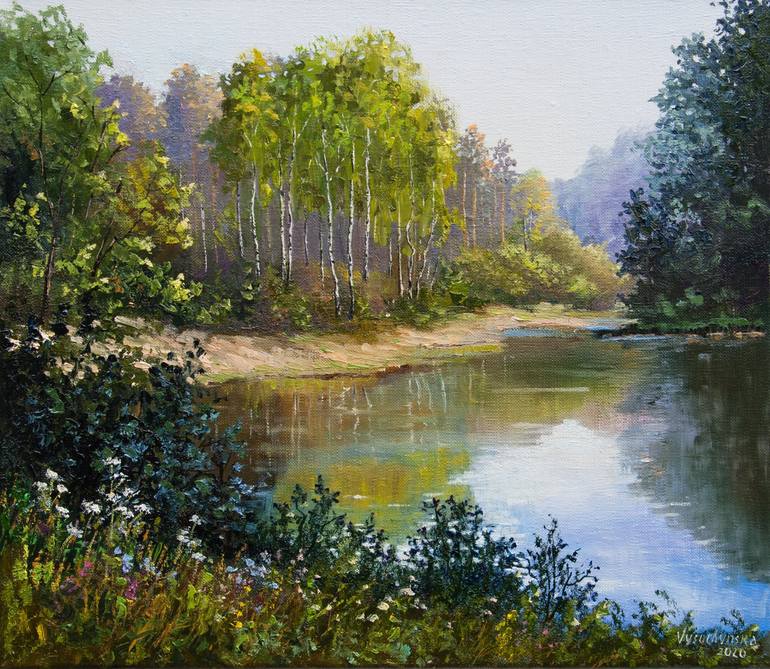Check Out Striking Human-Form Oil Paintings for Sale
Check Out Striking Human-Form Oil Paintings for Sale
Blog Article
Checking out All About Oil Paints: A Guide to Recognizing Their Charm and Value
Oil paintings have mesmerized target markets for centuries, offering a glance into the imaginative mastery of various periods. Their abundant history is linked with ingenious strategies and profound psychological expression. Comprehending the products and approaches behind these artworks can boost appreciation. Furthermore, the market for oil paintings provides opportunities for collection agencies and capitalists alike. As one explores this fascinating globe, the inquiry arises: what makes an oil painting absolutely beneficial?
The Background of Oil Paint: A Trip Through Time
Although oil paint has roots that date back to old times, it genuinely thrived throughout the Renaissance, when artists found its convenience and abundant color possibility. Early instances can be traced to the 7th century, with methods advancing especially across societies. The medium ended up being noticeable in Northern Europe in the 15th century, specifically with the jobs of artists like Jan van Eyck, that originated its use for detailed realism and lively shades. This period marked a departure from tempera paints, permitting for greater deepness and texture. As oil paint spread, it influenced countless artists, resulting in masterpieces by distinguished numbers such as Leonardo da Vinci and Rembrandt. The medium's heritage proceeds, shaping the art globe well into modern times.
Understanding Oil Repaints: Products and Techniques
As artists discover the globe of oil paints, they encounter a varied range of products and methods that define this medium. The primary components of oil paint include pigments, which provide shade, and drying out oils, such as linseed, that bind the pigments and assist in application. Numerous additives can modify the paint's texture and drying time, boosting versatility. Methods like glazing, where transparent layers are constructed up, and impasto, which entails using thick paint, enable for different aesthetic results. Additionally, making use of brushes, scheme blades, and even fingers can create one-of-a-kind textures and coatings. Recognizing these methods and products allows musicians to fully share their imagination and achieve the desired effect in their art work.
The Function of Shade in Oil Paintings
Color plays a crucial function in oil paintings, influencing both aesthetic appeal and emotional vibration. Comprehending shade concept basics, consisting of the relationships between hues, can enhance a musician's capacity to communicate mood and ambience. Furthermore, grasping color mixing strategies permits better depth and richness in a painting's scheme.

Color Theory Fundamentals
Recognizing shade concept is crucial for musicians dealing with oil paints, as it forms the structure for producing visually appealing and unified structures. Color concept incorporates the research of exactly how colors engage, the color wheel, and the relationships in between key, secondary, and tertiary colors. Artists make use of corresponding colors to enhance contrasts and produce centerpieces, while comparable shades advertise unity and cohesiveness within an item. Furthermore, the concepts of warm and awesome colors influence the assumption of deepness and room in a painting. Realizing these concepts permits artists to adjust color efficiently, leading the viewer's eye and communicating their intended message. Mastery of shade concept ultimately enriches an artist's capacity to communicate feelings and concepts through their work.
Emotional Influence of Shade
The emotional impact of color in oil paintings plays an essential duty in how audiences regard and attach with art work. Shades stimulate details feelings and moods, affecting the viewer's emotion. For example, cozy hues like oranges and reds can create a feeling of heat and energy, while cool tones such as blues and eco-friendlies often evoke peace or self-contemplation. Artists strategically choose shade schemes to enhance narrative components, leading the target market's psychological trip. The saturation and comparison of colors additionally enhance these effects, drawing focus and producing emphasis. Eventually, the interaction of shades in oil paintings not just enhances their aesthetic allure but also serves as an effective tool for emotional expression, enhancing the customer's experience and analysis.
Color Combining Techniques
While many elements of oil paint add to the overall structure, mastering color mixing techniques is essential for attaining wanted effects and deepness. Shade blending can be come close to via various techniques, including the additive and subtractive processes. Additive blending includes integrating colors of light, while subtractive mixing counts on pigments, where shades mix to produce new tones. Artists often use a minimal scheme to create unified works, understanding the partnerships in between primary, second, and tertiary shades. Methods such as glazing and scumbling further boost deepness and brightness. By skillfully blending shades, an artist can stimulate emotions, develop focal factors, and attain a feeling of realism, inevitably boosting the painting's psychological and visual effect.
Famous Oil Painters and Their Iconic Works

Famed for their proficiency of color and method, oil painters have actually produced some of one of the most celebrated artworks in background. Renowned musicians like Vincent van Gogh mesmerized target markets with his stirring brushwork in "Starry Night," while Claude Monet's "Perception, Daybreak" prepared for Impressionism. Leonardo da Vinci's "Mona Lisa" stays an enduring sign of imaginative wizard, showcasing his ability in recording human expression. Rembrandt's "The Night Watch" highlights his cutting-edge use of light and shadow. Other noteworthy numbers include Pablo Picasso, that transformed contemporary art with his bold trial and error in jobs like "Les Demoiselles d'Avignon," and Georgia O'Keeffe, whose vibrant representations of landscapes and flowers assisted define American modernism. Each artist's one-of-a-kind style contributed significantly to the oil paint landscape.
How to Evaluate the High Quality of an Oil Painting
Reviewing the quality of an oil paint entails a mindful analysis of workmanship methods, in addition to an analysis of shade and composition. Observing brushwork, layering, and the application of paint can reveal the artist's skill level. Additionally, the interaction of colors and the general plan of aspects contribute substantially to the paint's aesthetic worth.
Assessing Workmanship Methods
A thorough analysis of craftsmanship methods is essential for determining the top quality of an oil painting. Critics need to first analyze the application of paint; thick, distinctive brushstrokes may recommend a proficient hand, while excessively uniform applications can indicate an absence of depth. oil paintings for sale. The layering technique is likewise essential; the presence of glazes and varied thickness can enhance brightness and complexity. Additionally, the high quality of the products used, such as the canvas and pigments, plays a considerable role in durability and total aesthetic. Interest to detail in components like sides and shifts in between shades shows the artist's dedication to their craft. Eventually, these techniques add to the painting's psychological influence and market worth, offering as indications of the artist's skill and intent
Analyzing Color and Make-up
While assessing the quality of an oil painting, one should concentrate on the interaction of color and make-up, as these aspects are fundamental to the artwork's general impact. Shade options can develop and evoke emotions mood; consequently, here the musician's palette ought to be taken a look at for harmony and comparison. A well-balanced composition guides the audience's eye and creates a feeling of unity. Musicians commonly use techniques like the policy of thirds or leading lines to enhance visual interest. In addition, using light and shadow can add depth, boosting the three-dimensionality of the painting. Eventually, a successful oil painting weds color and make-up, involving the audience and inviting a much deeper recognition of the musician's vision and technique.
Taking care of and Preserving Oil Paintings
Appropriate care and conservation of oil paints is essential for preserving their stability and longevity. To secure these art work, it is important to present them far from direct sunshine, which can trigger fading and discoloration. Preserving a stable setting with controlled temperature level and humidity additional help in avoiding damages. Cleaning ought to be done carefully making use of a soft, completely dry fabric, avoiding any kind of severe chemicals that could hurt the paint or varnish. Routine assessments for signs of damage, such as cracking or flaking, are suggested. When keeping or transporting oil paintings, appropriate cushioning and framing are essential to prevent physical damage. Eventually, persistent care contributes to the visual allure and worth of oil paintings in time.
The Market for Oil Paintings: Investing and accumulating
Comprehending the marketplace dynamics for oil paintings is important for collection agencies and investors alike. The worth of these art work is affected by numerous factors, including the artist's track record, historic relevance, and existing patterns. Collection agencies often look for pieces that reverberate personally while thinking about potential recognition in worth. Auctions and galleries act as primary places for buying and selling, with rates varying based on demand and rarity. Purchasing oil paintings requires research study into the market, in addition to an understanding of credibility and provenance. Additionally, arising musicians might use chances for substantial returns, while established names can command high costs. On the whole, a calculated technique to accumulating can generate both visual pleasure and financial incentives.

Regularly Asked Concerns
What Are the Environmental Effects of Oil Painting Products?
The environmental impacts of oil paint materials include the release of unstable organic compounds (VOCs), unsafe waste generation, and resource extraction for pigments. These aspects add to contamination and environmental degradation, increasing issues amongst eco mindful artists and consumers.
Just How Do Different Canvases Impact Oil Paint Results?
Various canvases influence oil painting results significantly. Absorbency, appearance, and surface area high quality can alter paint application, drying times, and color vibrancy. Artists frequently select particular canvases to accomplish preferred impacts and improve their artistic expression.
Can Oil Paintings Be Recovered if Damaged?
If damaged, Oil paintings can indeed be recovered. Expert conservators use various strategies to fix rips, clean surface areas, and address staining, guaranteeing that the art work retains its initial appeal and value for future generations.
What Are the Indications of an Initial Oil Paint?
The signs of an initial oil paint consist of noticeable brush strokes, structure variants, and an irregular canvas weave (oil paintings for sale). Additionally, credibility might be verified via provenance, trademarks, and the visibility of a varnish layer special to oil mediums
Just How Has Modern Technology Influenced Modern Oil Painting Techniques?
Innovation has actually significantly influenced modern-day oil painting strategies by introducing electronic devices for planning, improved products for structure and longevity, and online systems for selling and sharing art, therefore increasing artists' creative opportunities and target market reach. Oil paint has roots that date back to ancient times, it truly prospered during the Renaissance, when musicians uncovered its versatility and rich shade potential. The emotional influence of color in oil paints plays a critical role in just how customers connect and regard with artwork. While numerous aspects of oil painting contribute to the total make-up, understanding shade mixing strategies is essential for achieving wanted effects and deepness. Examining the high quality of an oil paint includes a careful evaluation of craftsmanship strategies, as well as an analysis of color and structure. While reviewing the top quality of an oil paint, one must concentrate on the interplay of color and composition, as these aspects are fundamental to the artwork's total impact.
Report this page